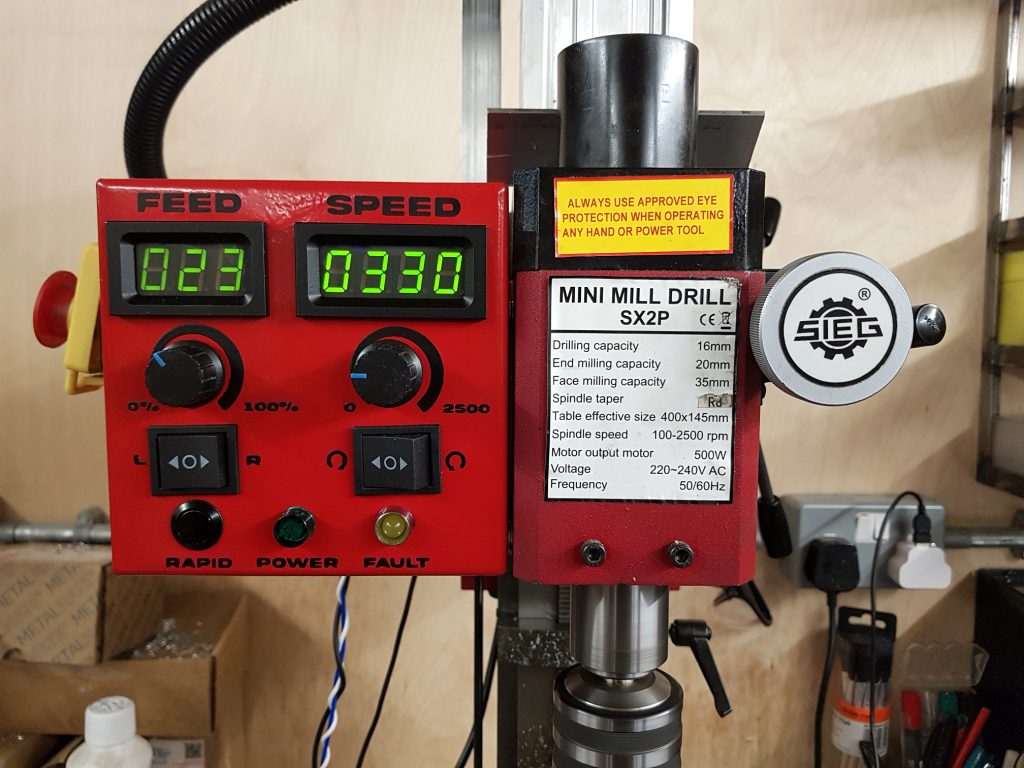 This is a project that I’d been planning on doing for the last 8 years (and I’ve even had most of the part waiting on the shelf for that long). It all started shortly after I got the SIEG milling machine back in 2014, when I ran into this page on macpod.net describing how to add an RPM readout. Well… here we are close to a decade later and I finally got it done, though I did end up doing it in a completely different way (and didn’t use any of the parts).
This is a project that I’d been planning on doing for the last 8 years (and I’ve even had most of the part waiting on the shelf for that long). It all started shortly after I got the SIEG milling machine back in 2014, when I ran into this page on macpod.net describing how to add an RPM readout. Well… here we are close to a decade later and I finally got it done, though I did end up doing it in a completely different way (and didn’t use any of the parts).
Read More →
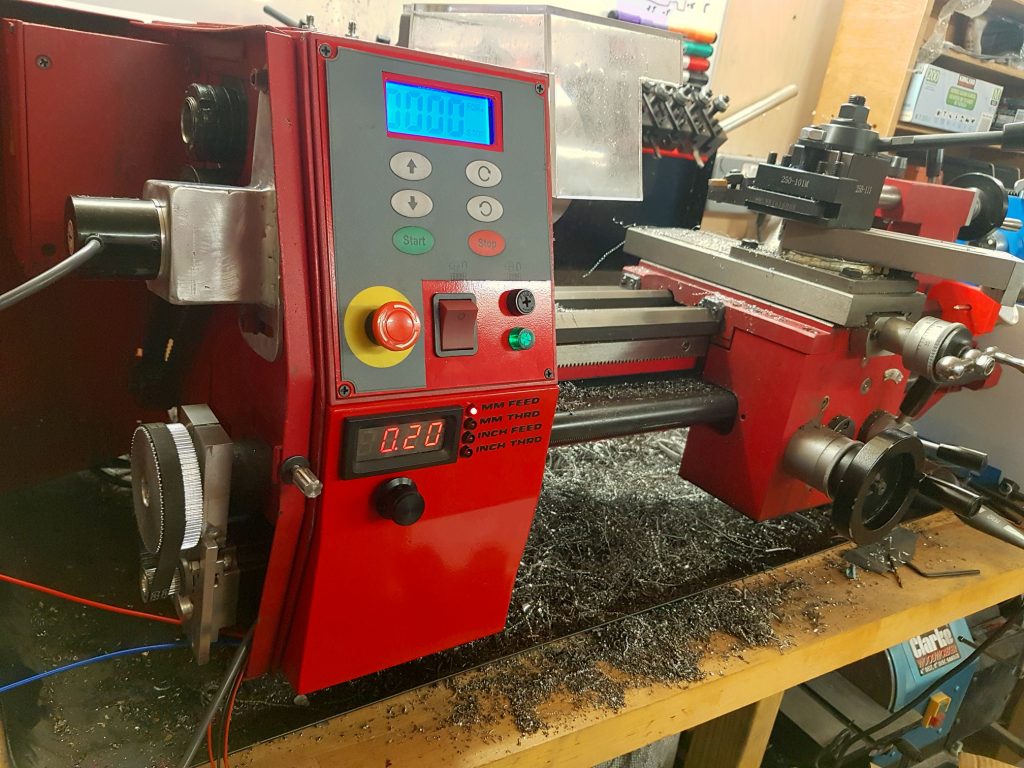
I’ve very rarely done any threading on my lathe. Changing the gears was always way too much of a pain, which meant I used a die whenever possible and left the gears permanently setup for feed. So after Youtube started recommending videos from Clough42’s series on his Electronic Lead Screw project, I was inspired to do something similar for my Lathe.
Read More →
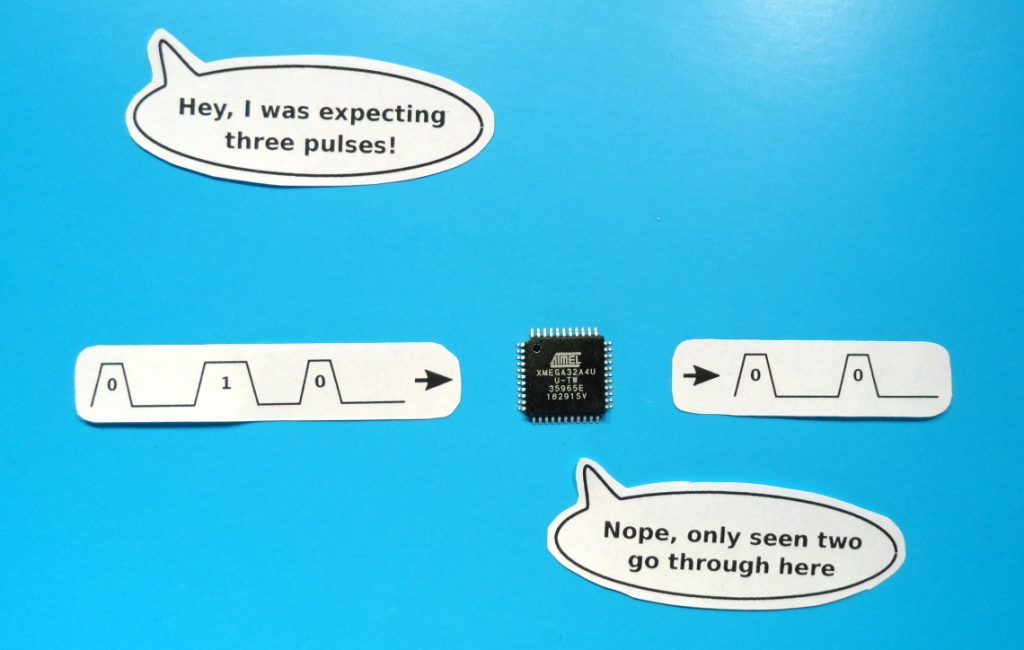 After getting the Vive position sensors working in my last post, I’ve been working on the next piece of the puzzle… how to send all of the positions back to the controller.
After getting the Vive position sensors working in my last post, I’ve been working on the next piece of the puzzle… how to send all of the positions back to the controller.
I’ll have a collection of position sensors linked together in a chain, and I’ll need to send the positions back along the chain to the controller, using as few wires as possible. This is really similar to sending colour information out to a chain of LEDs, just in the opposite direction, so I thought I might be able to use the same single wire signalling system.
Unfortunately, due to a quirk of the pulse width capture mode of the AVR Xmega’s timers, this didn’t work out.
Read More →
 I’ve got a crazy idea for a new extension to my HDMI Light project… I’ll save the details for another day, but it will only work if I can accurately find the position of many small objects. I’d considered a few options, but as I’ve got an HTC Vive VR system, I thought I might be able to use its tracking system to do the locating.
I’ve got a crazy idea for a new extension to my HDMI Light project… I’ll save the details for another day, but it will only work if I can accurately find the position of many small objects. I’d considered a few options, but as I’ve got an HTC Vive VR system, I thought I might be able to use its tracking system to do the locating.
Read More →
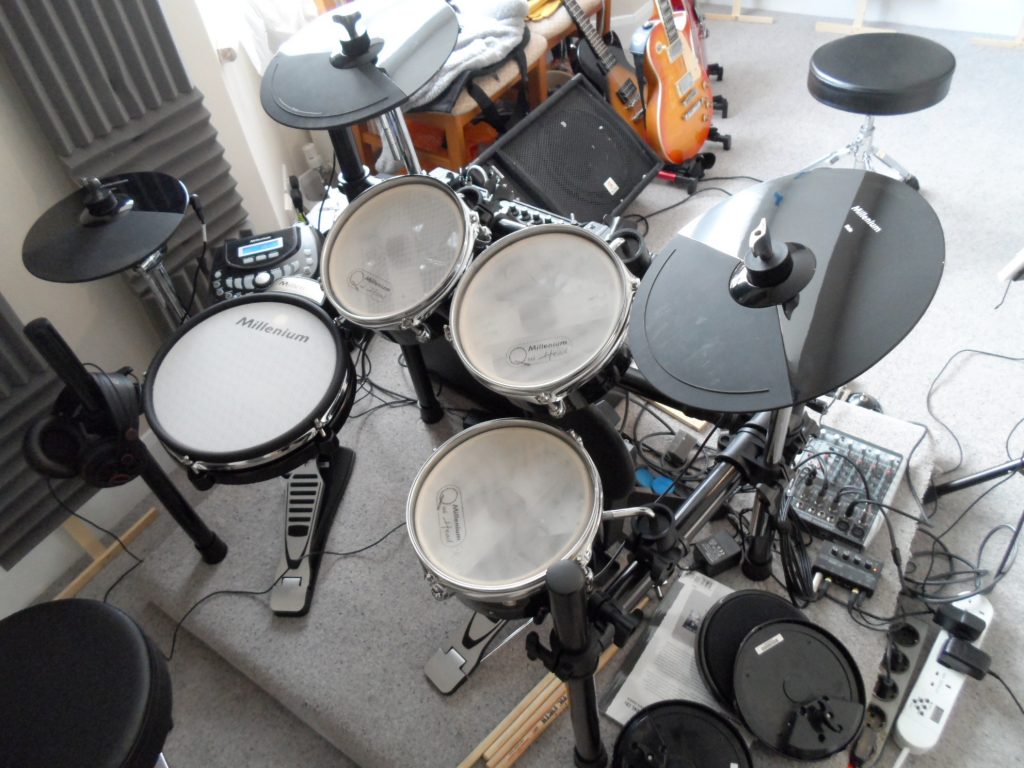
One of the reasons that I’ve not posted anything new recently is that I’ve been learning to play the guitar, and now that I’ve got to the point where I can play some almost recognisable songs, I wanted some accompaniment and bought a cheap electronic drum kit. I took the cheaper option and got a kit that had a mesh snare and rubber toms, but then instantly regretted not getting the full mesh kit as the rubber pads make a lot more noise.
I thought I could just buy mesh replacements but the cheap ones aren’t sold separately and the easily available Roland ones are very expensive. Luckily it turns out that it’s really easy to make them at home. The actual sensor is just a simple piezo element, there’s no active electronics in the pads at all.
Read More →
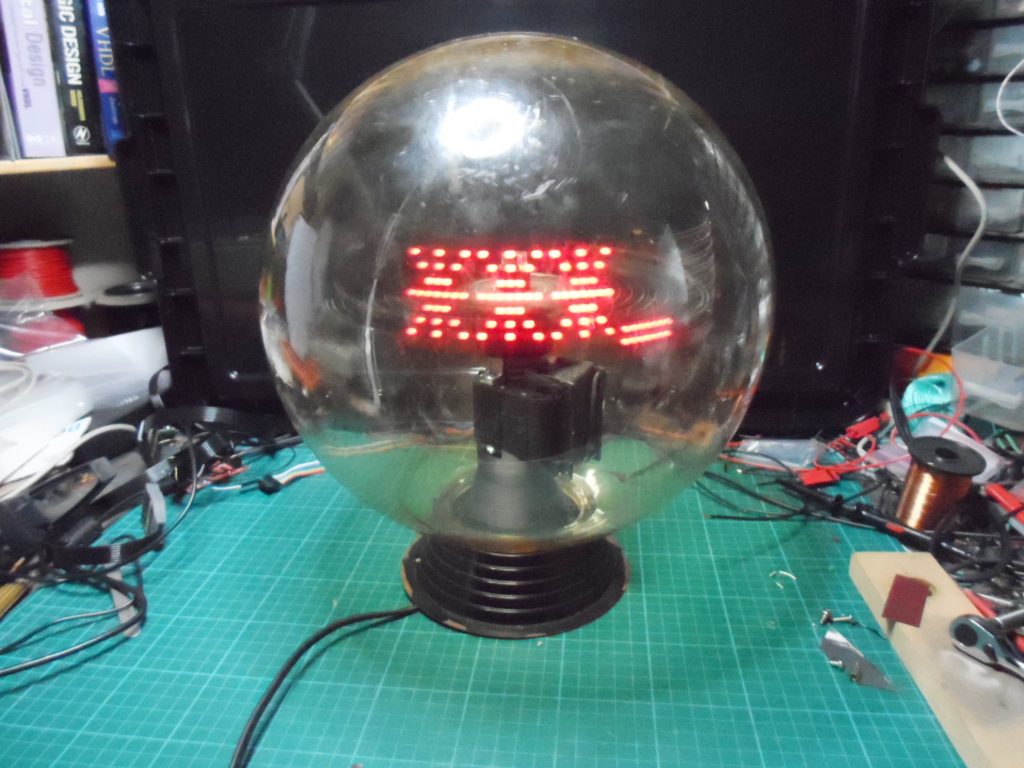
Recently a question came to me from a friend of a friend… they had a globe that displays text messages that they wanted to use as a Christmas decoration, the only problem was that they couldn’t change the message because it was password protected… could I unlock it?
Hmm… maybe… bring it round and I’ll take a look…
Read More →
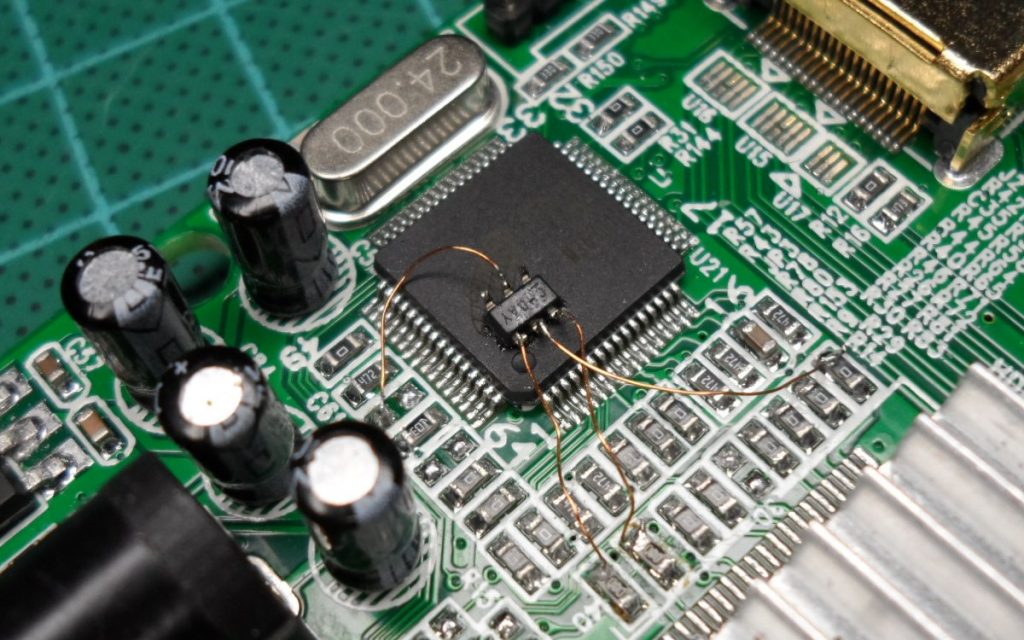
One problem with my HDMI Ambilight project is that it can’t handle encrypted content, or more accurately, it can only handle encrypted content if I spend a lot of money and get an HDCP license, which would then allow me to buy the version of the ADV7611 chip that has built-in HDCP keys. While this doesn’t cause me much of a problem as I tend to watch almost everything via MythTV, with the TV on the HDMI port and the HDMI Light on the DVI port, it would be nice to be able to use an HDMI splitter between my AV receiver and TV instead, and have it still work on the odd occasion when I watch a BluRay directly.
Luckily, my post announcing HDMI Light version 2 was featured on Hackaday, where a couple of people pointed out that it’s actually quite easy to disable the encryption in some HDMI splitters, effectively turning them into HDCP strippers. Even more helpfully, RoyTheReaper described exactly how to disable the encryption in an HDMI splitter I had lying around in my junk box.
While his method works perfectly as far as disabling the decryption is concerned, it has the side effect of also disabling all of the nice little extras that come with HDMI like automatic input switching and controlling the AV receiver volume from the TV remote. What I needed to do was find a way to let the microcontroller in the splitter continue to do all the other things it does while stopping it from enabling encryption.
Read More →
 It’s been over a year since I created the first version of my Ambilight clone, but I finally found the time to return to it and add some new features. I was originally planning on adding colour correction (to correct for the purple wall behind my TV) and output delay (to get perfect synchronisation with the TV), but I got a bit carried away and have added a whole raft of new stuff.
It’s been over a year since I created the first version of my Ambilight clone, but I finally found the time to return to it and add some new features. I was originally planning on adding colour correction (to correct for the purple wall behind my TV) and output delay (to get perfect synchronisation with the TV), but I got a bit carried away and have added a whole raft of new stuff.
Read More →
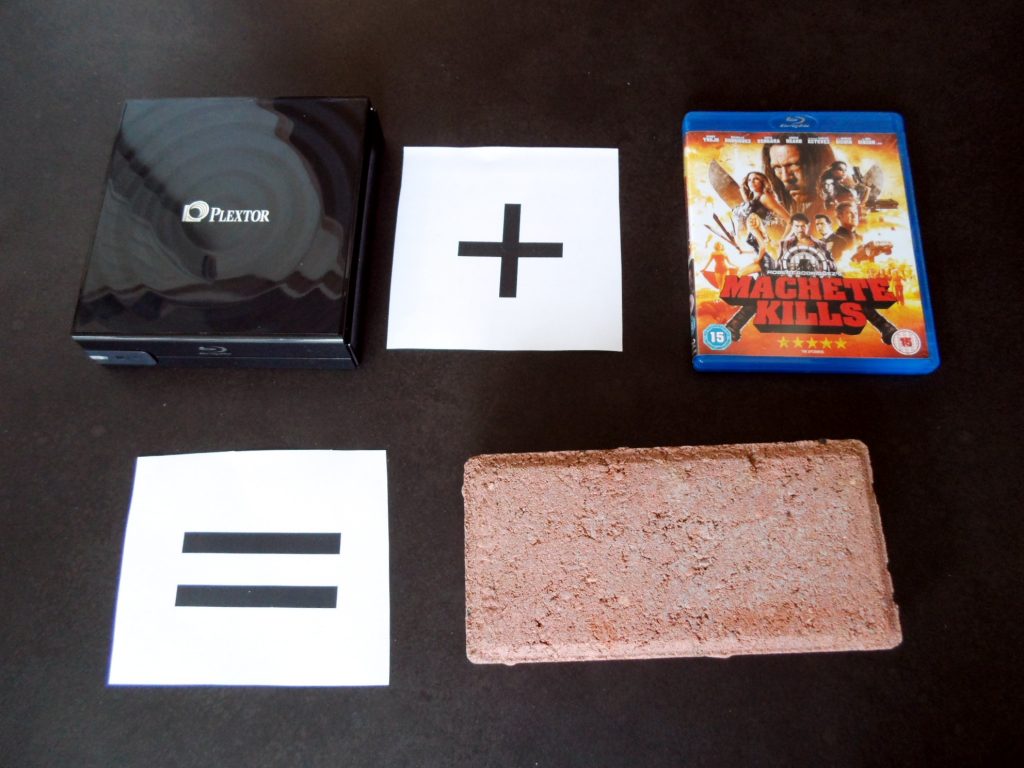
I buy a lot of DVDs and Blu Ray discs, but I very rarely watch them straight from the disc. As soon as I get a new one, it gets ripped to my MythTV backend, from where I can watch it at any time and on any screen in the house. Until recently, I’ve been happily doing this using MakeMKV and a Plextor USB Blu Ray drive, but unfortunately it seems that the film industry thinks the best way to reward me for buying so many is to brick my drive.
Read More →
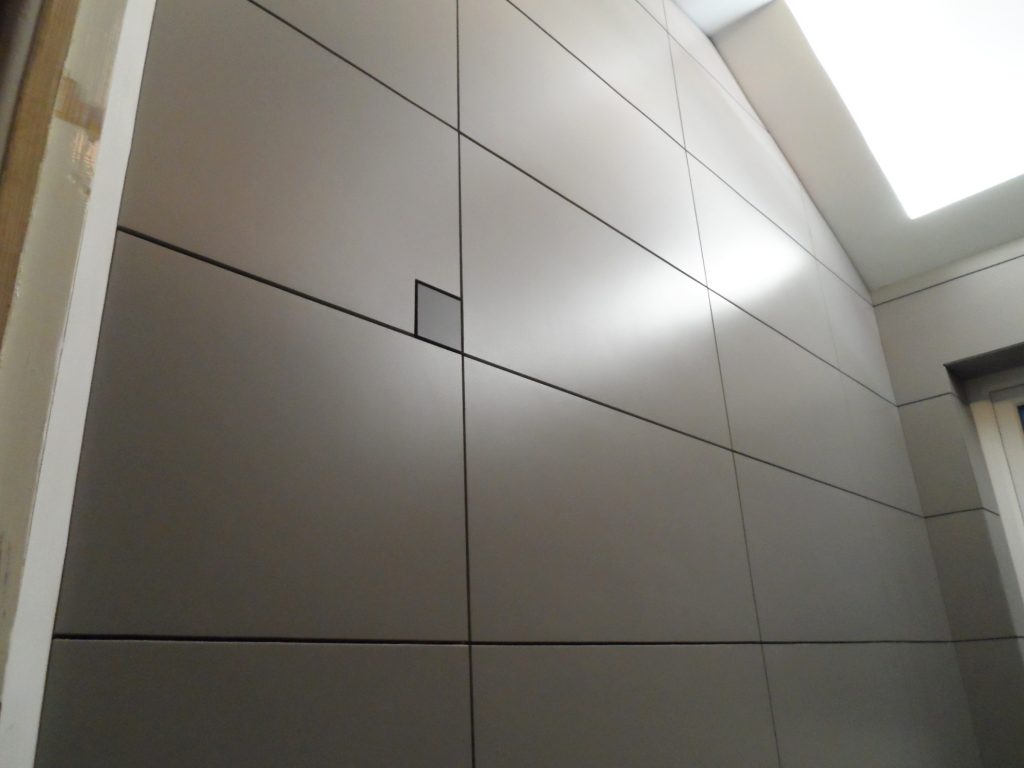
Having previously created a Border Router and a Six Channel LED Dimmer for my custom Myha home automation system, the next item on the list was to create a Myha version of the touch switch that I’d previously made for the Rako system. This was actually the third version of the touch switch as I’d made two Rako versions, the first using an official Rako switch contact module and the second communicating directly over the air after I’d reverse engineered the RAKO protocol.
As this was version three, the bulk of the hardware design was already fairly well proven and little had to change, mostly it was just a case of changing the radio and firmware. However, this was the first version to be installed in a wall, and this is where a few surprises were to be found.
Read More →
Recent Comments